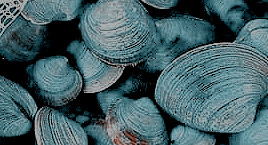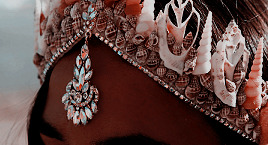Photo

Justinian and Attendants, mosaic, c 547 AD
San Vitale, Ravenna
7 notes
·
View notes
Photo

In Greek mythology and religion, Asclepius was the God of Medicine – descendant of the God Apollo and mortal Coronis. His name means, "to cut open". It is said that he was so named as a result of his mother's childbirth experience, during which time her womb had to be cut open in order for Asclepius to be born (now known as a cesarean section). All traditional cultures have some personification of the Divine Healer or miracle working physician. (Wiki)
4 notes
·
View notes
Photo

Orpheus adorned in Roman battle attire playing a lyre from the walls of the Catacombs of Marcellinus and Peter, Rome.
The Catacombs of Marcellinus and Peter are found approximately three kilometers from southeast Rome and the ancient Via Labicana, and date to the 4th century AD. The catacombs were named in reference to the Christian martyrs Marcellinus and Peter who may have been buried there according to legend, near the body of St. Tiburtius.
During excavations performed from 2004 to 2010, an estimated 20,000 skeletons were discovered in these catacombs; the skeletons were buried in loculi (individually buried within a niche), arcosolia (a burial under an arched recess), or cubicala (individuals grouped together into a burial chamber). The catacombs "cover 3 hectares with 4.5 kilometers of subterranean galleries on three different levels". (Wiki)
1 note
·
View note
Photo

Phoebus Apollo, The Sun God with his chariot and horses
One of Apollo's most important daily tasks was to harness the four horses (Aethon, Pyrois, Phlegon, Eous) that were pulling his golden chariot, in order to pull the Sun across the sky every day.
6 notes
·
View notes
Photo

The Erechtheum, Athens, Greece
On the north side of the Acropolis, Athens, which was primarily dedicated to the goddess Athena. The building, made to house the statue of Athena Polias, has in modern scholarship been called the Erechtheion (the sanctuary of Erechtheus or Poseidon) in the belief that Pausanias' description of the Erechtheion applies to this building. However, whether the Erechtheion referred to by Pausanias is indeed the Ionic temple or an entirely different building has become a point of contention in recent decades. (Wiki)
4 notes
·
View notes
Photo








𝐀𝐌𝐏𝐇𝐈𝐓𝐑𝐈𝐓𝐄 𝐐𝐔𝐄𝐄𝐍 𝐆𝐎𝐃𝐃𝐄𝐒𝐒 𝐎𝐅 𝐓𝐇𝐄 𝐒𝐄𝐀
amphitrite, in greek mythology, the goddess of the sea, wife of the god poseidon, and one of the 50 daughters of nereus and doris. poseidon chose amphitrite from among her sisters as the nereids performed a dance on the isle of naxos. amphitrite spurred his advances, with him sending a dolphin after her where she encountered it at the atlas mountains. for the dolphin’s work in helping convincing amphitrite to marry him, poseidon created the delphinus constellation. seals and dolphins are the symbols and offspring of amphitrite. she also bred sea monsters and her great waves crashed against the rocks, putting sailors at risk.
65 notes
·
View notes
Photo

“Hypnos” by Carlo Maria Mariani (1931–present). Italian artist. oil on canvas.
347 notes
·
View notes
Photo



Statue of a prince or dynast without crown. Bronze, Greek artwork of the Hellenistic era, 3rd-2nd centuries BC. (Look at the beard, subtly engraved using a burin). Museo nazionale romano di palazzo Massimo
Repost from @yamunaontheroad
906 notes
·
View notes
Photo

ADIKIA was the personified spirit (daimona) of injustice and wrong-doing. She was depicted as an ugly, barbarian woman with tattooed skin. Her opposite number was Dike (Justice) who was sometimes depicted beating her with a club.
1 note
·
View note
Photo

Achlys is the goddess of misery, poisons, and eternal night. She lives inTartarus and is the daughter of Nyx, the goddess of night. Nyx really loves Achlys because she makes her proud, whereas Hemera is the exact opposite of her, thus making Achlys and Nyx hate Hemera. She keeps Heracles' shield with her to remind people about the pain and sadness it caused her. Her hobbies are clawing at her cheeks to make them bleed, she takes pleasure in crying no matter how much it hurts. She can create poisonous flowers by just summoning them to her will.
https://greekgoddesses.fandom.com/wiki/Achlys
0 notes
Text


Sword of Thracian king Seuthes III (IV century BC)
The ruler's sword is 61 centimetres long. Its handle is shaped like a gryphon's head, and the blade is multi-layered and made of iron. The sword also has a special scabbard with a decoration imitating scales on the body of the mythical gryphon - a creature that combines the marks of a lion and an eagle. The sword was probably used primarily as a parade weapon.
The weapon was discovered during excavations in the mound "Golyama Kosmatka" (Valley of the Thracian Rulers, Kazanlak, Bulgaria) on October 4 and 5, 2004, when archaeologist Georgi Kitov made one of his great discoveries - the tomb of the Thracian king Seuthes III.
The sword was located in the third chamber of the site, on a piece, broken by the marble door, and under a golden wreath - exactly where the ruler's head should lie. The ritual laying shows the great importance that the Thracians attached to the weapon.
118 notes
·
View notes
Photo

Portrait of a Roman c 80 BC, Marble, Lifesize, Palazzo Torlonia, Rome
2 notes
·
View notes
Photo

Pandora by John William Waterhouse, 1896, Private Collection
The painting is titled Pandora in honor of the first woman according to Greek mythology. Created by order of Zeus to introduce all evil into the lives of men, after Prometheus, against divine will, He will give them the gift of fire.
The recreated moment is the one in which Pandora is about to open the chest that contained the evils of the human race (old age, illness, passion, poverty and others).
Her curiosity caused everyone except Hope to run away and spread out into the world.
The theme, widely represented since Antiquity, was illustrated by the also Pre-Raphaelite painter Dante Gabriel Rossetti in his work Pandora. (Wiki)
1 note
·
View note
Photo

Prometheus brings Fire to Mankind, Heinrich Friedrich Füger
c 1817
4 notes
·
View notes
Photo

The Pantheon, Rome c 118-125 AD, Rome
Dedicated to “all the gods”.
0 notes
Photo

Temple of Fortunis Virilis, Rome. Late 2nd century BC
Probably dedicated to the Roman god of Harbours, Portunus.
The oldest well-preserved example of its kind, showing Greek influence with Ionic columns and entablature as well as Etruscan elements.
2 notes
·
View notes
Photo

Portrait of a Boy, Early 3rd c bc, bronze, 9″
Archaeological Museum, Florence
30 notes
·
View notes